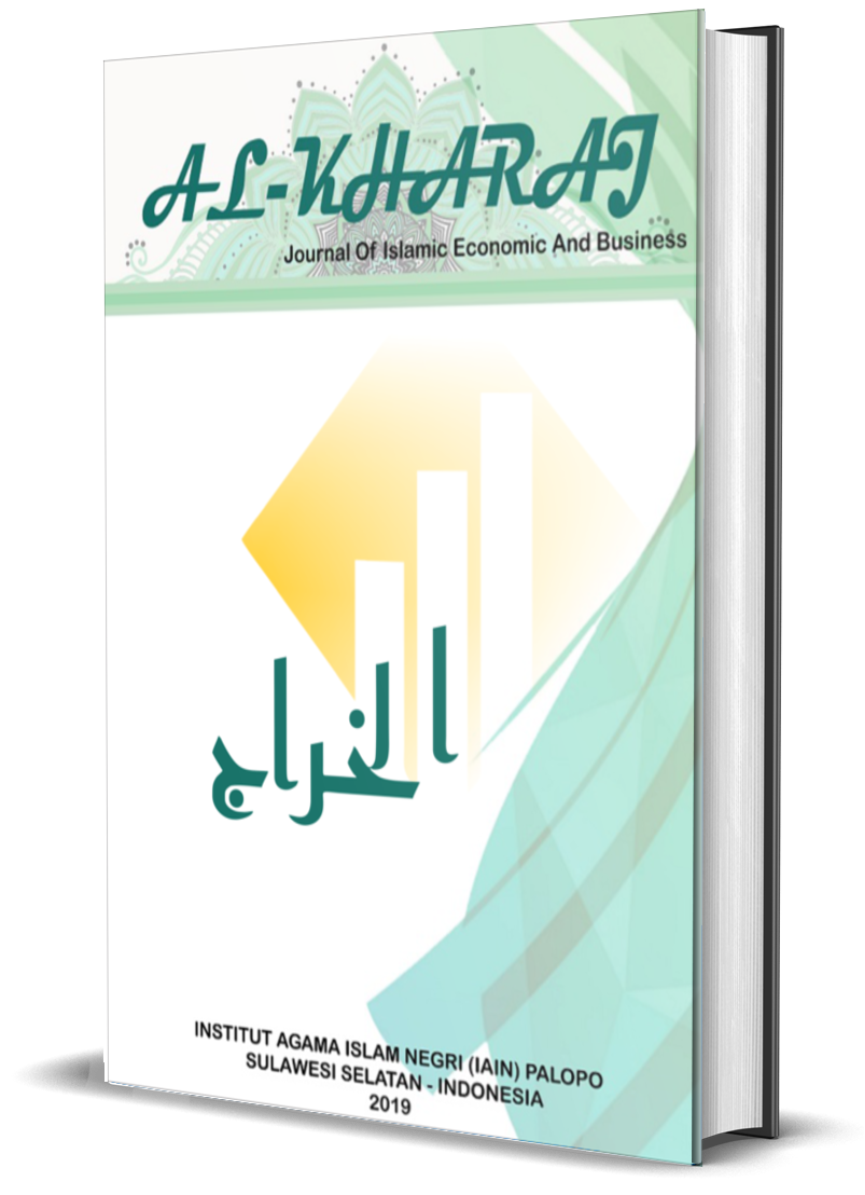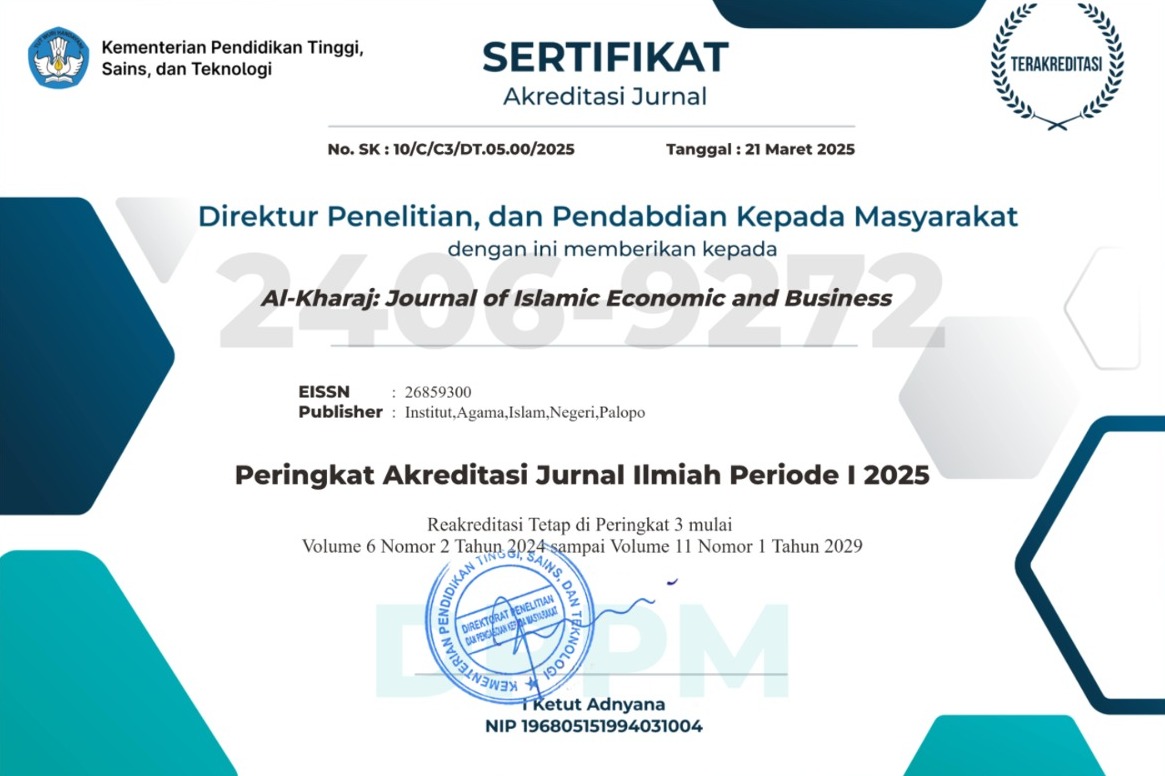The Impact of Digitalization and Innovation Culture on Human Resource Productivity with Work Motivation Mediation in the Islamic Banking Sector of Bank Muamalat Indonesia Regional East Java
DOI:
https://doi.org/10.24256/kharaj.v7i3.7682Keywords:
Digitalization, Innovation Culture, Work Motivation, Human Resource Productivity, SEM-AMOS, Islamic BankingAbstract
Digital transformation and innovation culture are two strategic elements in strengthening human resource performance, particularly in the Islamic banking sector. This study aims to analyze the influence of digitalization and innovation culture on human resource productivity, with work motivation as a mediating variable. The study was conducted at Bank Muamalat Regional East Java using a quantitative approach with an explanatory design. A total of 110 respondents were randomly selected from the branch employee population. Data were analyzed using the Structural Equation Modeling (SEM) method based on AMOS.
The results of the study indicate that digitization and innovation culture have a positive and significant effect on work motivation. Innovation culture has also been proven to have a direct and significant effect on human resource productivity. However, digitization and work motivation do not have a significant direct effect on productivity. Furthermore, the indirect paths from digitalization and innovation culture to productivity through work motivation are also not statistically significant. These findings indicate that the role of work motivation as a mediator in the relationship between digitalization and innovation culture on human resource productivity has not yet been strongly established in the context of Islamic banking under study.
References
Amabile, T. M., & Kramer, S. J. (2011). The Progress Principle: Using Small Wins to Ignite Joy, Engagement, and Creativity at Work. Harvard Business Review Press.
Armstrong, M. (2006). Performance Management: Key Strategies and Practical Guidelines. Kogan Page.
Bharadwaj, A., El Sawy, O. A., Pavlou, P. A., & Venkatraman, N. (2013). Digital Business Strategy: Toward a Next Generation of Insights. MIS Quarterly, 37(2), 471–482.
Dobni, C. B. (2008). Measuring Innovation Culture in Organizations: The Development of a Valid and Reliable Instrument. European Journal of Innovation Management, 11(4), 539–559. https://doi.org/10.1108/14601060810911156
Dessler, G. (2015). Human Resource Management.
Dessler, G. (2017). Human Resource Management. Pearson Education.
Hartog, J. P. (2010). Innovative Work Behavior.
Haryono. (2016). SEM Method for Management Research with AMOS LISREL PLS. SEM Method for Management Research with AMOS LISREL PLS.
Hasibuan, D. H. (2018). Human Resource Management.
Herzberg, F. (1959). The Motivation to Work. New York: Wiley.
Husaeni, U. (2006). Usman Husaini. (2006). Management Theory, Practice, and Educational Research.
Herzberg, F. (1968). One More Time: How Do You Motivate Employees? Harvard Business Review.
Huda, M., Heryanto, B., & Sholeh, B. (2021). Islamic Banking and Service Digitalization. Journal of Islamic Economics, 13(1), 45–56.
Huda, M., Heryanto, B., & Sholeh, B. (2021). Islamic Banking and Service Digitalization. Journal of Islamic Economics, 13(1), 45–56.
Hurley, R. F., & Hult, G. T. M. (1998). Innovation, Market Orientation, and Organizational Learning: An Integration and Empirical Examination. Journal of Marketing, 62(3), 42–54. https://doi.org/10.1177/002224299806200303
Imam, G. (2006). Structural Equation Modeling: An Alternative Method with Partial Least Square. Diponegoro University.
Indradewa, S. A. (2022). The Effect of Soft Skill, Motivation and Job Satisfaction on Employee Performance through Organizational Commitment. Retrieved from https://api.semanticscholar.org/CorpusID:252376501
Ismail, A. G., & Alhabshi, S. M. (2020). Islamic Banking and Innovation. IIUM Press.
Lestari, Y. D., & Ramadhani, R. (2020). Human Resource Digitalization: Human Resource Management Strategies in the Industry 4.0 Era. Journal of Economics and Business, 7(1), 21–31.
Mangkunegara, A. A. P. (2015). Human Resource Management in Companies. Bandung: PT Remaja Rosdakarya.
Martins, E. C., & Terblanche, F. (2003). Building Organizational Culture that Stimulates Creativity and Innovation. European Journal of Innovation Management, 6(1), 64–74.
Maslow, A. H. (1943). A Theory of Human Motivation. Psychological Review, 50(4), 370–396.
Murniati. (2013). Tools for Hypothesis Testing. Soegijapranata Catholic University. Muzaiyanah, S. (2021). The Influence of Unlimited Compensation on Loyalty with Motivation and Work Discipline as Intervening Variables. Journal of Management Science (JIMMU), 6(2), 108-123.Raharjo, S. T., Kusumawardhani, A., & Astuti, R. (2019). Innovation, Motivation, and Human Resource Performance. Journal of Economic and Business Research, 4(2), 89–97.
Robbins, S. P., & Judge, T. A. (2017). Organizational Behavior (17th ed.). Pearson.
Schein, E. H. (2010). Organizational Culture and Leadership (4th ed.). Jossey-Bass.
Sebastian, I. M., Ross, J. W., Beath, C., Mocker, M., Moloney, K. G., & Fonstad, N. O. (2017). How Big Old Companies Navigate Digital Transformation. MIS Quarterly Executive, 16(3), 197–213.
Simanjuntak, P. J. (2005). Management and Performance Evaluation. Jakarta: Publishing House of the Faculty of Economics, University of Indonesia.
Sumanth, D. J. (1984). Productivity Engineering and Management. New York: McGraw-Hill.
Setiaman. (2023). Tutorial on Partial Analysis of Structural Equation Models Using SMART-PLS Version 3 Software for Healthcare Workers. Bhakti Mulia Foundation.
Simamora, H. (2004). Human Resource Management.
Solimun. (2010). Partial Least Squares Method. Malang: PLS. CV. Citra Malang.
Sugiyono. (2012). Educational Research Methods.
Sugiyono. (2018). Quantitative, Qualitative, and R&D Research Methods. CV. Alfabeta. Sugiyono. (2019). Statistics for Research (1st ed.). Alfabeta.
Sugiyono. (2018). Business Research Methods: Quantitative, Qualitative, Combined, and R&D Approaches (S. Y. Suryandari (Ed.); 2nd ed.). Alfabeta.
Suhendi. (2017). Employee Commitment to the Company.
Taylor, S. E. (2012). Health Psychology.
Timothy, S. P. (2013). Organizational Behavior.
Westerman, G., Bonnet, D., & McAfee, A. (2014). Leading Digital: Turning Technology Into Business Transformation. Harvard Business Press.
Wright, P. M., & McMahan, G. C. (1992). Theoretical perspectives for strategic human resource management. Journal of Management, 18(2), 295–320. https ://doi.org/10.1177/014920639201800205
Downloads
Published
How to Cite
Issue
Section
Citation Check
License
Copyright (c) 2025 Fitri Cahyaning, Ronny Malavia Mardani , Muhammad Ridwan Basalamah

This work is licensed under a Creative Commons Attribution-ShareAlike 4.0 International License.
Authors retain copyright and grant the journal right of first publication with the work simultaneously licensed under a Creative Commons Attribution-ShareAlike 4.0 International License. In line with the license, authors are allowed to share and adapt the material. In addition, the material must be given appropriate credit, provided with a link to the license, and indicated if changes were made. If authors remix, transform or build upon the material, authors must distribute their contributions under the same license as the original.









